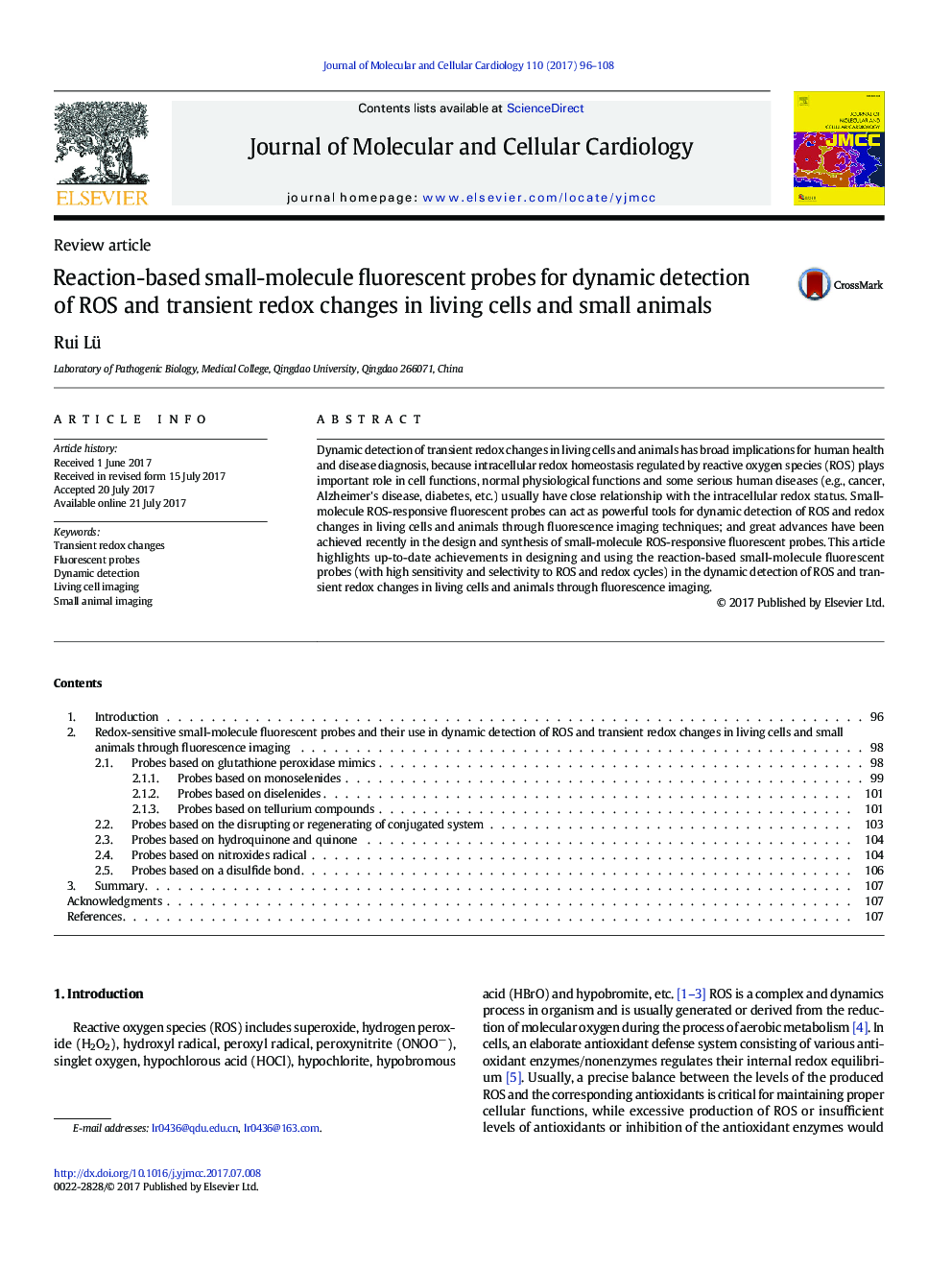| Article ID | Journal | Published Year | Pages | File Type |
|---|---|---|---|---|
| 5533414 | Journal of Molecular and Cellular Cardiology | 2017 | 13 Pages |
â¢Overview of reaction-based small molecule fluorescent probes for ROSâ¢Design and synthesis of redox-sensitive fluorescent probesâ¢Real-time and dynamic detection of transient redox changesâ¢Fluorescent imaging of living cells and small animals
Dynamic detection of transient redox changes in living cells and animals has broad implications for human health and disease diagnosis, because intracellular redox homeostasis regulated by reactive oxygen species (ROS) plays important role in cell functions, normal physiological functions and some serious human diseases (e.g., cancer, Alzheimer's disease, diabetes, etc.) usually have close relationship with the intracellular redox status. Small-molecule ROS-responsive fluorescent probes can act as powerful tools for dynamic detection of ROS and redox changes in living cells and animals through fluorescence imaging techniques; and great advances have been achieved recently in the design and synthesis of small-molecule ROS-responsive fluorescent probes. This article highlights up-to-date achievements in designing and using the reaction-based small-molecule fluorescent probes (with high sensitivity and selectivity to ROS and redox cycles) in the dynamic detection of ROS and transient redox changes in living cells and animals through fluorescence imaging.
Graphical abstractDownload high-res image (64KB)Download full-size image
